For beginner campers and backpackers who don’t want to break the bank, and aren’t gram-counting ultralight obsessives, Vango is the perfect brand. It offers well-designed and affordable entry-level tents that do the job admirably – nothing extravagant or exceptional, just keeping you dry, warm and protected at the minimal weight and cost possible.
Some may prefer the DofE-recommended Scafell 200 or Helvellyn 200, but here we’ve tested the Vango Apex Compact 200 – which is effectively the popular Vango Nevis 200 with an eco-friendly upgrade.
It’s a solid option for a two-person tent, with a proven design, clever features and impressive stats. It’s comfy enough, copes reasonably well in windy conditions and boasts impressive hydrostatic head ratings, but it’s relatively heavy (2,204g) and some of the materials feel less than premium.
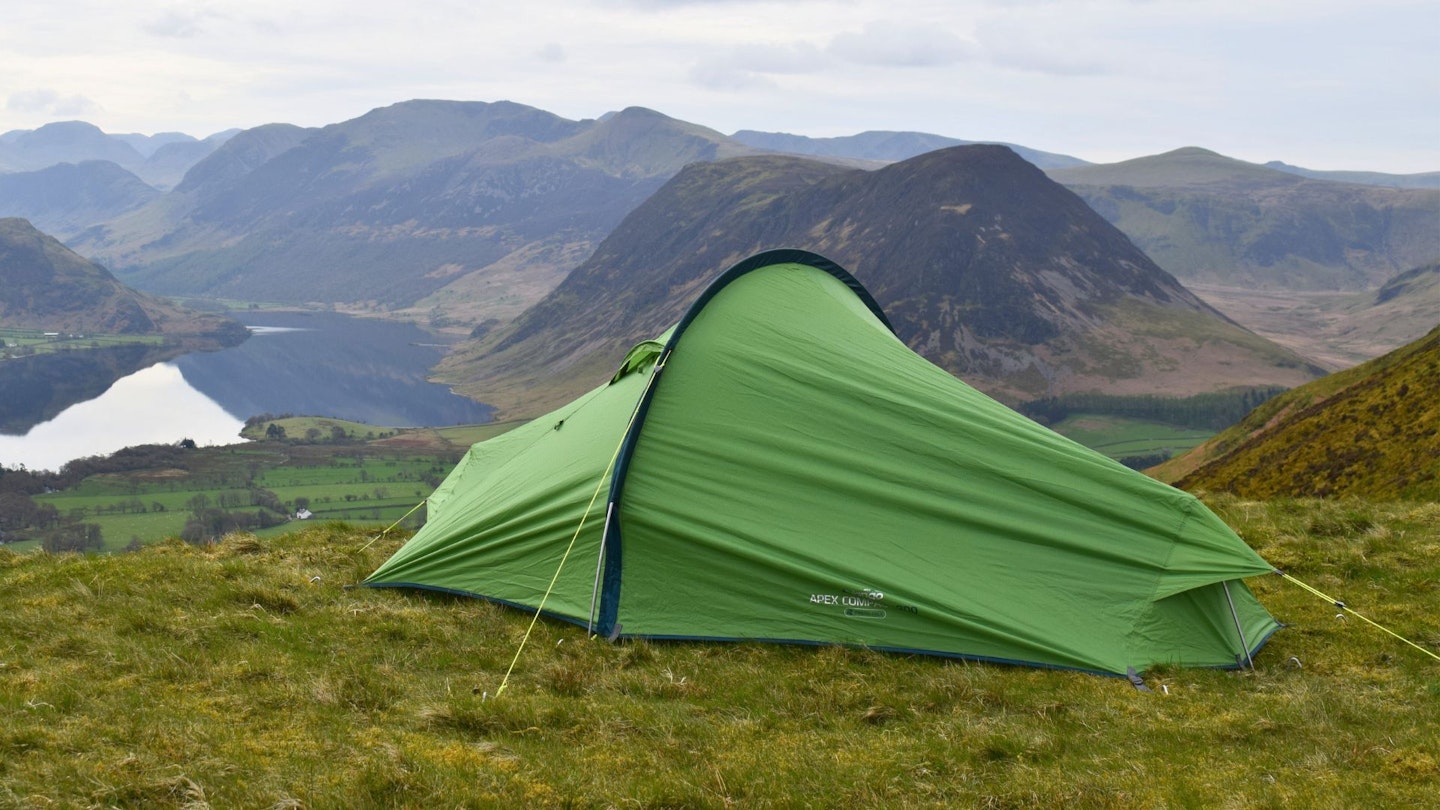 LFTO
LFTOPros
- Very affordable
- Proven design
- Stable structure
- Vango sells spares and offers repair service
Cons
- Not the roomiest
- Heavier than premium rivals
- Lower quality than more expensive rivals
| Type | Tunnel |
| Weight | 2.2kg |
| Packed size | 30 x 20cm |
| Doors | 2 |
| Vestibules | 1.5 |
| Inner | Polyester |
| Fly | Recycled 70D Protex Eco (3000mm HH) |
| Groundsheet | 70D polyester (6000mm HH) |
| Poles | PowerLite 7001-T6 alloy |
Shape, structure, pitching, and internal liveability
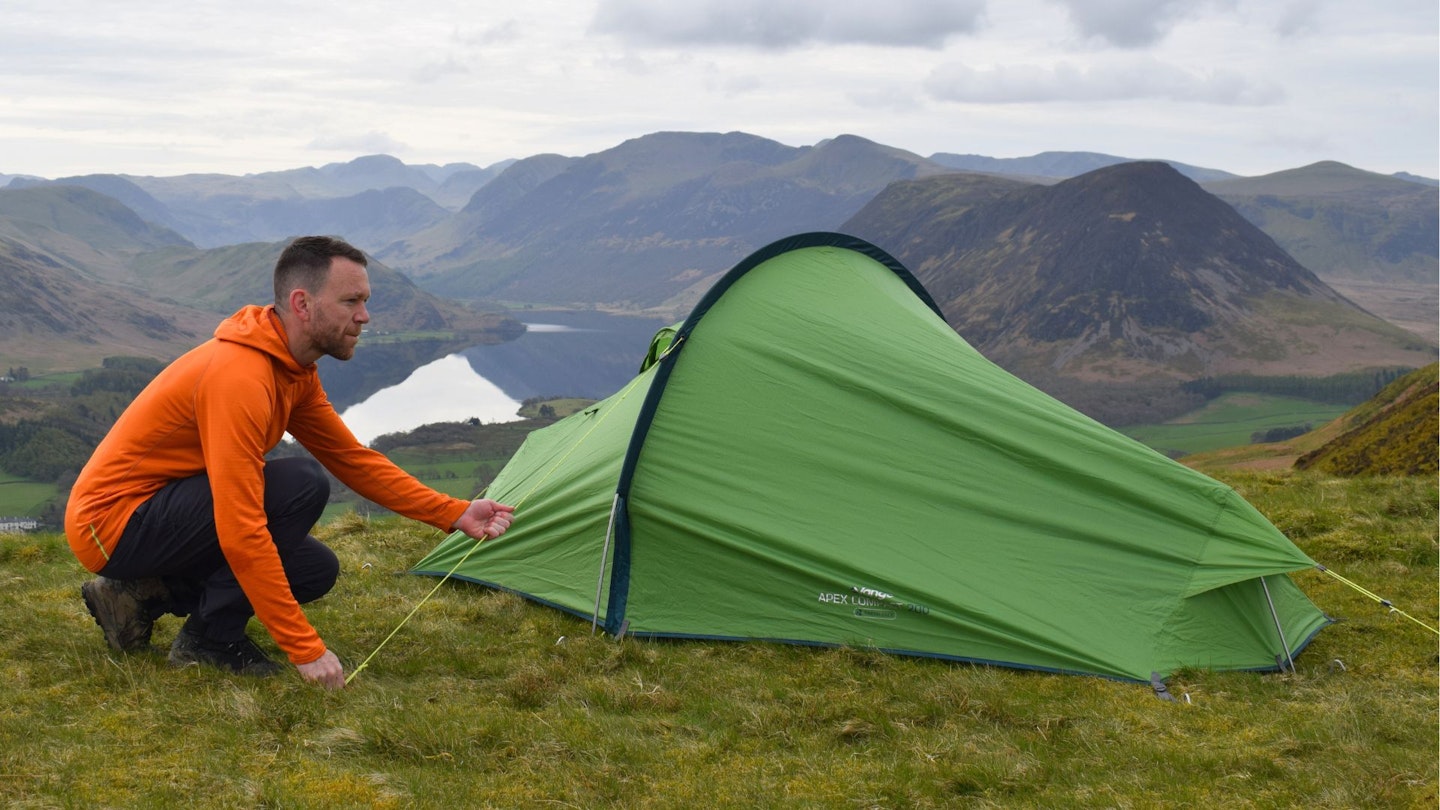
Vango officially claims you can pitch the Apex Compact 200 in five minutes. We took this as a challenge and set the stopwatch rolling during our attempts. We managed 4min30secs on our first go, without really rushing, so the claim seems accurate.
Pitching is flysheet first, or all as one, which works well for the UK’s rainy climate. You start by sliding the large main pole into the pole sleeve on the outside of the flysheet, securing the pole tips into the eyelets on the pole anchor straps, and then tightening the pole sleeve tension strap (located to the right of the door) to remove any slack in the pole sleeve.
Next you insert two short strut poles into webbing pockets at the head and foot end of the tent, again securing them in the locking tips and eyelets provided. All that is left to do is stake out the tent’s four corners, pole anchor straps and guylines, and play around with the cord adjusters until the flysheet structure feels taut and stable. This works pretty well, although the tent’s exterior does have a slight tendency to become “droopy”, particularly over time or in wet and windy conditions.

Shop this product
All of the pitching can be done with the inner already attached to the underside of the flysheet via toggles inserted into rings. Or you can pitch the flysheet-only first and then manually attach the inner later, although this will involve crawling around on your knees and fiddling around awkwardly with toggle attachments, so it’s probably best to attach the inner at home in advance. The inner also features Vango’s tension band system, which can be adjusted and fine-tuned to ensure the inner has a tight, non-floppy structure and the best possible footprint.
Once erected, the tent has a proven design used by many brands and hundreds of tents, including some iconic shelters such as the Terra Nova Laser Compact and Hilleberg Akto. This design features one main central hoop, which creates a tunnel-like, tapered, low-to-the-ground profile. Two smaller struts poles add a touch of extra room at both the foot and head ends, and you also get two side doors, one for each camper.
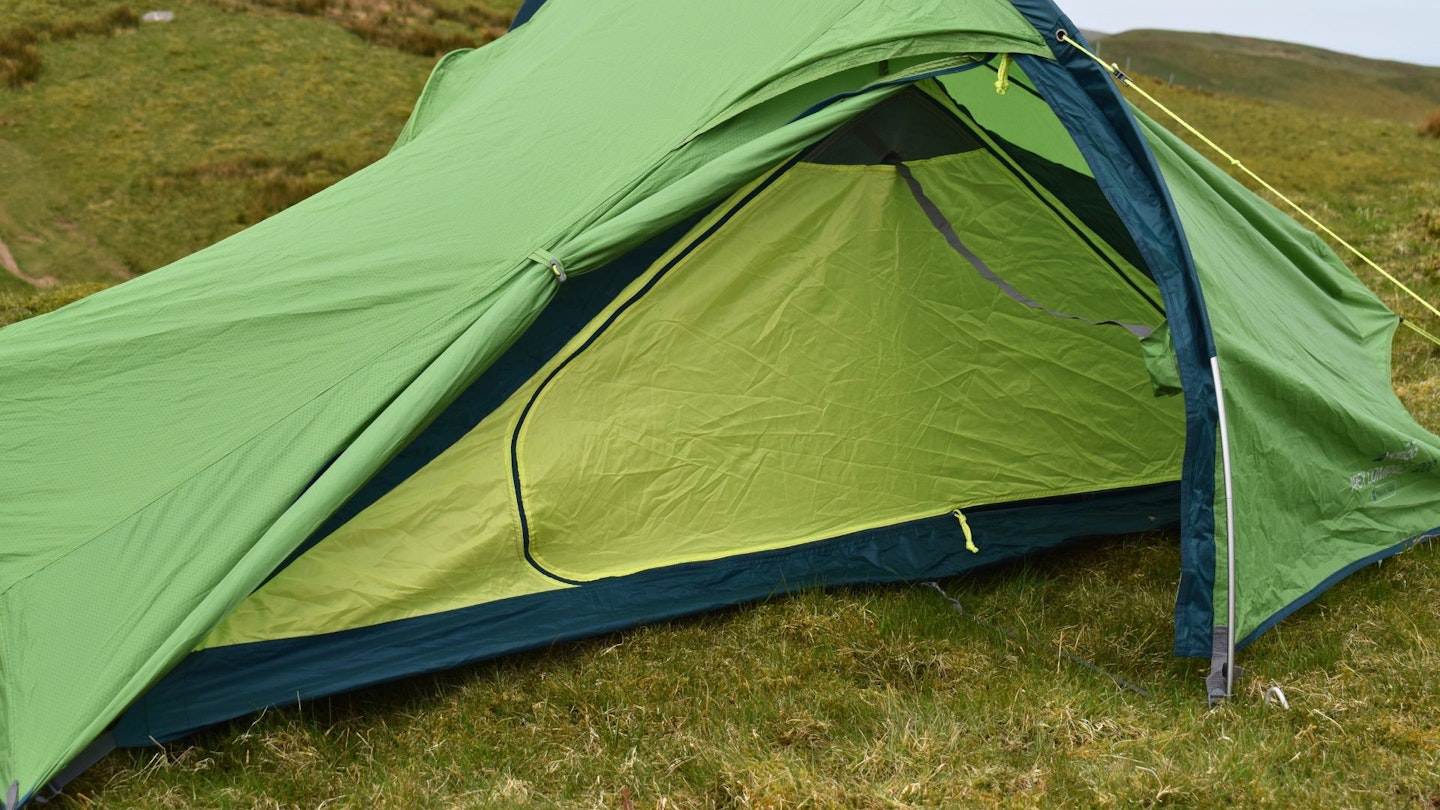
The main door has a decent-sized porch for storing a backpack and boots; the other is effectively porch-less, although there is the tiniest slither of space. Vango says the Apex Compact 200’s tunnel tent style and central hooped pole design “provides the greatest space to weight ratio” possible.
We’d say, however, that internal room is decent, but far from the most spacious we’ve ever seen. The max height is 95cm in the middle, which is just high enough for sitting up straight (unless you’re 6ft or taller), but the roof and walls of the Apex Compact 200 are aggressively tapered and you don’t really get a sensation of roominess.
Shop this product
It’s not the widest either, so fitting two sleeping mats side by side is a little cramped. If you need more space, dome-shaped tents such as Sea to Summit Alto TR2 Plus or tunnel-shape tents such as the palatial Nordisk Oppland 2 LW offer far improved liveability. Both of these models outprice the Vango several time over, though.
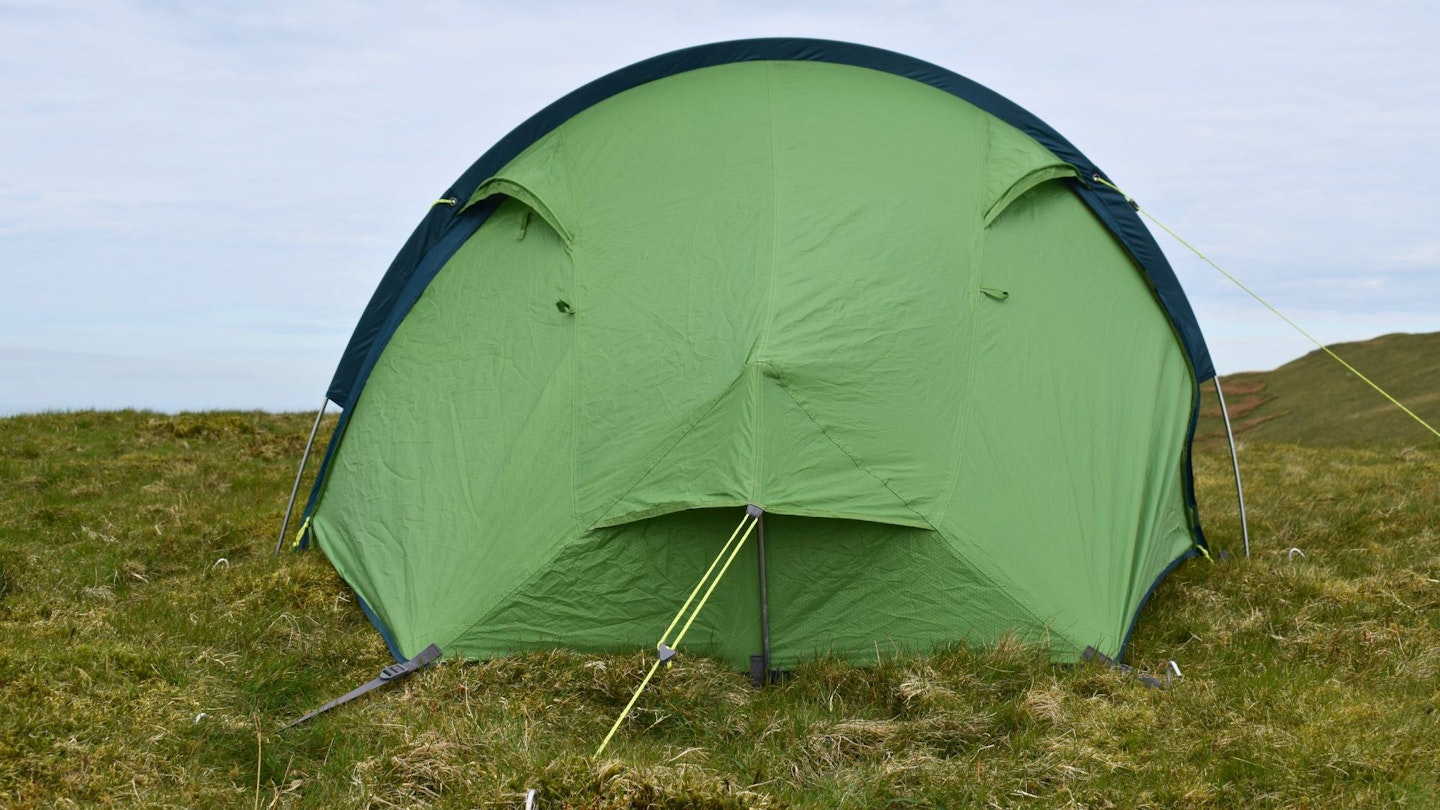
The Apex Compact 200’s internal footprint is pentagon-shaped, with a length of 215cm (which is pretty good) and a width of 120cm, including an extra triangular wedge of space at the non-porch side of the tent. It isn’t the roomiest, but it’s just about comfy enough for two. Vango suggests sleeping in a top’n’tail orientation for the best use of space.
Waterproofing
The Vango Apex Compact 200 has a very similar shape and design to the Duke of Edinburgh recommended Vango Nevis 200. The main difference is the fabric used. The Nevis 200 is made from Vango’s original Protex fabric, a 70-denier polyester with a 3,000mm hydrostatic head rating. Whereas the Apex Compact 200 is made from the new and upgraded Protex Eco fabric, again a 70-denier polyester with a 3,000mm hydrostatic head rating, but with enhanced environmental credentials. Protex Eco is made from recycled single-use plastics, and is part of Vango’s Earth Trek Collection.

Vango promises Protex Eco will “provide the perfect roof over your head when the elements open for as long as the weather demands”, describing the fabric as “waterproof, lightweight and strong” and able to deliver “durability and reliability for wild camps”. It’s worth noting, however, that the Protex Eco fabric is only used in the flysheet, and although recycled, it isn't PFC-free. The inner’s groundsheet does not feature recycled materials and is made from a tougher 70-denier polyester with a 6,000mm hydrostatic head rating.
Shop this product
The groundsheet has a bathtub-style design for added waterproofing a few inches up the walls (although it could stretch up higher), while all of the tent seams are fully factory sealed and taped for complete protection. The 3,000mmm and 6,000mm hydrostatic head ratings are impressive too and proved reliable in all 3-season conditions. The flysheet offers good all-round protection too, pegging out flush to the ground and thus reducing the risk of water ingress underneath it.
Condensation
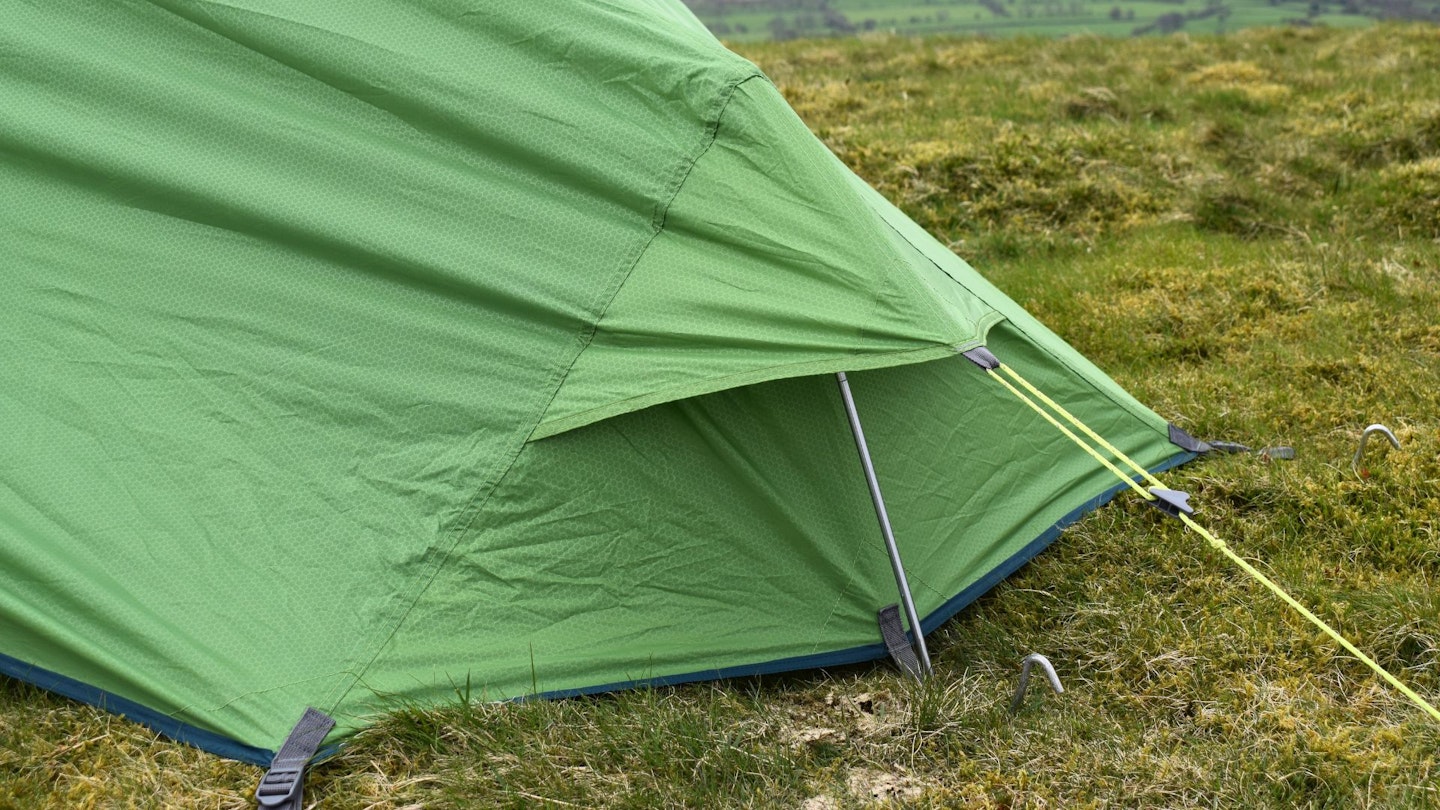
There is no magic wand for avoiding condensation in the UK’s wet climate, particularly if the weather conditions are conspiring against you, and this type of tunnel tent, with a flush-to-the-ground flysheet and aggressively tapered walls (where the fly and inner are quite close together), can be plagued by condensation in certain conditions.
However, while the Vango Apex Compact 200 is certainly not immune to the issue, it has some decent features to help combat it. The inner door is part mesh and part breathable polyester, which helps allow air flow and improve ventilation (while also keeping bugs out). You also get two triangular mesh “windows” at the foot and head end of the inner. The flysheet, meanwhile, has two little vents above each door and two mesh “windows”, one above each of the strut poles at each end.
Shop this product
Wind protection
This tent has a good shape for windy conditions. It has a relatively low-to-the-ground profile, the tunnel shape is aerodynamic with wind flowing over it smoothly without buffeting, and the structure feels pretty sturdy and stable.
The flysheet comes with two pre-attached guylines – one on each side of the main central pole – which add additional stability and structure. The guylines also feature high visibility materials. They are “easy to see in low light conditions” and “the colour blends from the tent to a bright orange to enhance visibility”, as Vango explains.
Weight and packed size

On our scales the Vango Apex Compact 200 weighs 2,204g, broken down as follows: the flysheet and inner with two guylines (1,581g), three poles (292g), pole bag (13g), 12 metal pegs (191g), peg bag (11g) and the main carry case (116g).
This is quite heavy compared to many (often more premium) rivals that slide under the 2kg mark, and may be a deal-breaker for some campers. But just above 2kg seems reasonable considering the very affordable price-point of £175. If desired, you can save weight by switching in ultralight pegs and ditching the overly heavy carry bag. No manner of tweaking, however, will enable the Vango Apex Compact 200 to compete with some more expensive tents in terms of weight: it’s 683g heavier than the Alpkit Ordos 2 and 757g heavier than the Sea to Summit Alto TR2 Plus, for example.
A lot of the extra weight comes from the cheap-feeling, rather basic components used in this tent. All of the hardware, such as the toggles, straps and clips, are quite chunky and heavy, and don’t feel particularly premium, while the main flysheet and groundsheet materials are quite thick and hefty. At this price-point, however, all of this is to be expected.
Shop this product
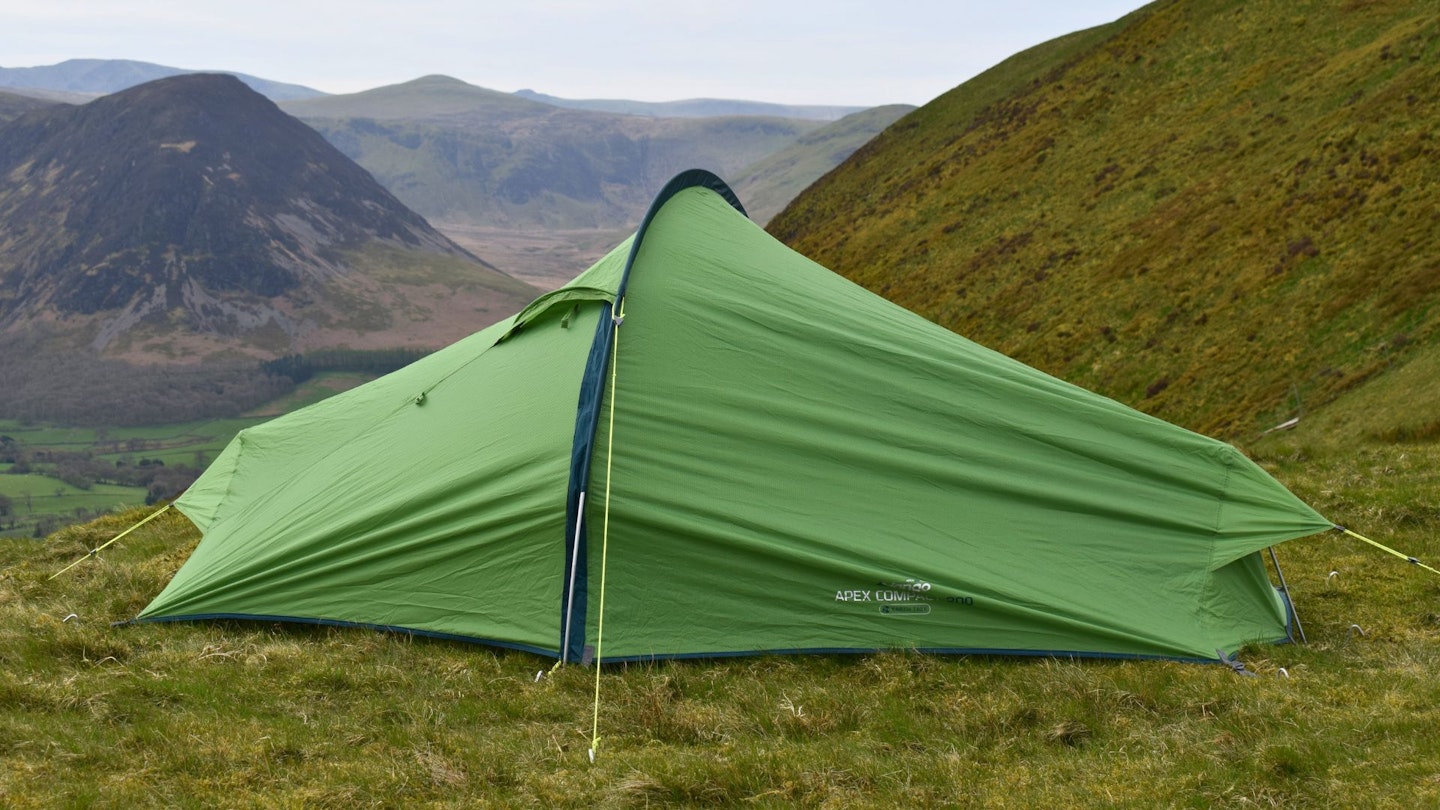
Once packed inside its fast pack carry bag, which has a bikepacking-ready design attachable to bicycle handlebars, the Apex Compact 200 is sized 30x20cm by our measurements. This is reasonably small and compact, and will fit neatly into your hiking backpack without any major problems.
The smaller pack size of the Apex Compact 200 is achieved through a pole re-design compared to the Vango Nevis 200. Unique to the Apex, the pole folds down into 30cm sections, which – according to Vango – makes the tent “ideal for packing light on any adventure, from mountaineering, hiking and Duke of Edinburgh’s Award activities to bikepacking”.
Features
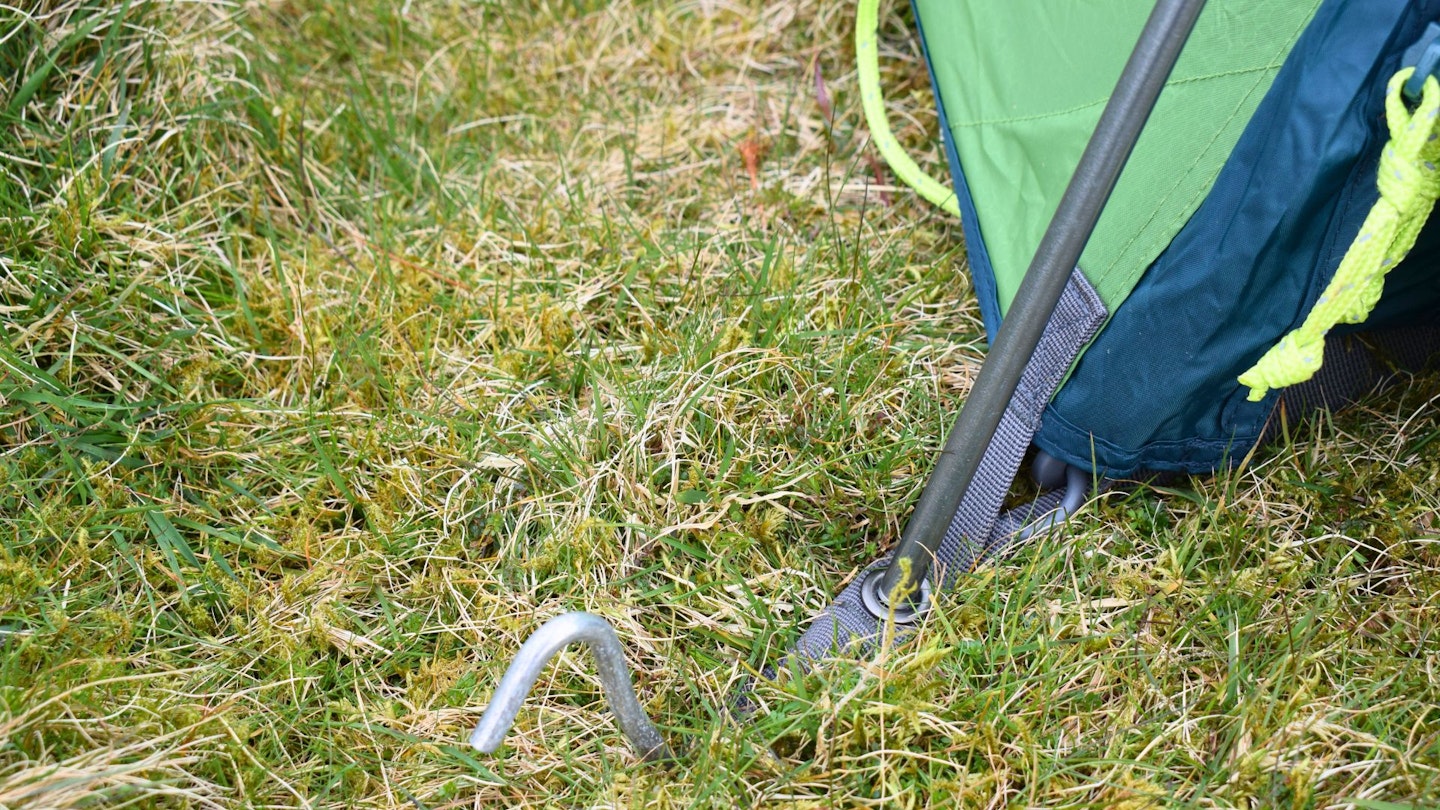
The Vango Apex Compact 200 is supplied with 12 metal pegs. These pegs are rather basic wire pegs – the simplest peg design, with a straight and long shaft topped with a hook. Each peg weighs approximately 16g. If you switched in 12 MSR Groundhog pegs (10g) you’d save 72g.
The tent’s three poles – one main, long central pole and two short strut poles – are Vango’s PowerLite 7001-T6 aluminium alloy poles, which are described as “lightweight, compact and durable”.
Shop this product
Internally you get four small mesh pockets for keeping your tent tidy and organising your essential items such as a head torch or phone. The inner door, meanwhile, is O-shaped, which makes getting in and out easier. The door’s zipper is easy to open with one hand too. The flysheet door can also be rolled away and secured open when required.
It's important to note that Vango sells spare parts and has a comprehensive repair service for its tents as well. So, as if the Apex Compact 200 wasn't already great value, the fact it can be be repaired and kept in use for a long time boosts its value and eco credentials further.
Verdict

An affordable, entry-level tent with a proven design and good features – but it’s probably a little heavy and basic for some.
How we tested

The gear tester conducting our review of the Vango Apex Compact 200 tent was James Forrest. James has been testing gear and writing features for LFTO and our magazine, Trail, as a freelancer for the last few years.
When it comes to wild camping and backpacking in the UK, there are very few who are as experienced as James. He is one of the UK's most well-known and authoritative outdoor writers.
